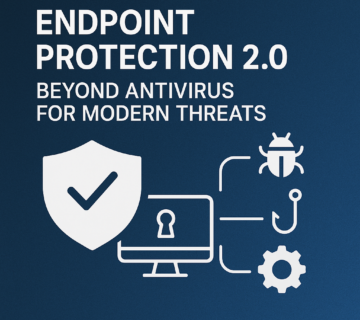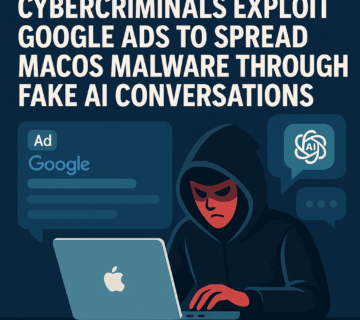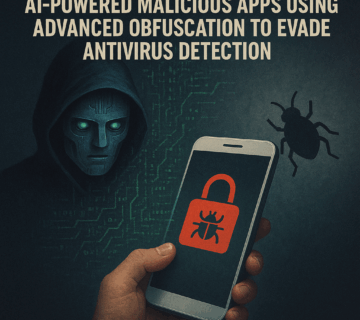Gootloader Malware Resurfaces with Advanced Evasion Tactics After Seven-Month Hiatus
🎙️ Dive Deeper with Our Podcast!
Gootloader Resurgence: Advanced Evasion Tactics and Ransomware Pipeline
The cybersecurity landscape just got more dangerous. After disappearing for seven months, the notorious Gootloader malware operation has emerged with a sophisticated arsenal of new techniques designed to bypass security tools and infect unsuspecting victims. If your organization relies on downloading legal documents or business templates from the internet, you need to read this.
What Makes This Comeback So Concerning?
Security researchers tracking the Gootloader operation reported its sudden disappearance back in March 2025. The shutdown came after persistent disruption efforts that included filing abuse reports with internet service providers and hosting platforms. Many in the cybersecurity community hoped this threat had been permanently neutralized.
They were wrong.
The malware has returned more dangerous than ever, spreading across over 100 compromised websites and targeting thousands of unique search terms. The attackers are playing a numbers game, and the odds are not in your favor.
How the Attack Actually Works
Understanding the attack chain helps you recognize the danger before it’s too late. The operation starts with search engine manipulation—specifically, SEO poisoning that pushes malicious websites to the top of search results when users look for legal documents, contracts, or business templates.
Picture this scenario: Your team needs an NDA template quickly. Someone searches Google for “non-disclosure agreement template” or “mutual NDA document.” Among the top results appears a professional-looking website offering exactly what you need. The site looks legitimate, maybe even includes what appears to be user discussions or testimonials.
When you click the download button, the website performs a quick check to verify you’re a real user and not a security scanner. If you pass this test, your browser downloads what appears to be a standard ZIP archive. Inside that archive sits a file with a name like “mutual_non_disclosure_agreement.js”—notice that .js extension instead of .docx or .pdf.
Opening that JavaScript file triggers the infection sequence. Gootloader establishes its foothold on your system and begins downloading additional malicious payloads. These can include Cobalt Strike beacons, backdoors, and tools that grant attackers full access to your corporate network.
The endgame? Ransomware deployment. Data theft. Complete network compromise.
The New Tricks That Make Detection Harder
What separates this latest campaign from previous iterations are three sophisticated evasion techniques that security researchers have recently uncovered.
Custom Font Manipulation for Cloaking
The first technique is genuinely clever in a disturbing way. The attackers use specially crafted web fonts that replace actual letters with look-alike symbols. When security tools or researchers examine the website’s HTML source code, they see gibberish—random characters that don’t trigger any alarms.
But when a regular user visits the site through a normal web browser, the custom font renders this gibberish as perfectly readable text. The word “Florida” might appear in your browser, but the source code shows “Oa9Z±h•” instead. This makes it incredibly difficult for automated security systems to identify malicious keywords like “invoice,” “contract,” or “agreement” in the code.
The technical implementation is more sophisticated than simple character substitution. The font’s metadata appears completely legitimate. The character “O” maps to a glyph named “O” just like it should. However, the actual vector paths defining each character have been swapped. When your browser requests the shape for the letter “O,” the font delivers the coordinates that draw an “F” instead.
Malformed Archives for Selective Extraction
The second technique exploits how different tools handle ZIP archives. The attackers craft specially malformed archive files that behave differently depending on what software extracts them.
When a victim downloads the ZIP file and extracts it using Windows Explorer—the default method for most users—the malicious JavaScript file appears with a name like “Review_Hearings_Manual_2025.js.” But when security researchers or automated analysis systems extract that same archive using tools like VirusTotal, Python’s built-in ZIP utilities, or 7-Zip, they only see a harmless text file.
The archive actually contains both files, but the malformation causes different extraction tools to reveal different contents. This allows the malware to slip past automated scanning systems that would normally flag malicious JavaScript files.
Rapid Lateral Movement with Supper Backdoor
Once initial infection occurs, the threat actors move with alarming speed. Recent investigations show attackers performing network reconnaissance within 20 minutes of successful infection. In one documented case, they completely compromised the victim’s Domain Controller—the keys to the entire Windows kingdom—within just 17 hours.
The campaign deploys the Supper SOCKS5 backdoor, which provides persistent remote access to infected systems. This particular backdoor has documented connections to Vanilla Tempest, a ransomware affiliate with an extensive criminal history spanning multiple ransomware families including BlackCat, Inc, Quantum Locker, Zeppelin, and Rhysida.
Who’s Most at Risk?
Any organization whose employees regularly search for and download business documents faces exposure. The target list includes:
Legal departments searching for contract templates and agreement forms. HR teams looking for policy documents and employment forms. Administrative staff downloading invoice templates and business forms. Small businesses without dedicated IT security staff. Remote workers using personal devices for work tasks. Procurement teams searching for vendor agreement templates.
The attackers deliberately target search terms related to professional documents because they know these searches happen across all industries and company sizes. A Fortune 500 company’s paralegal and a three-person startup’s founder both need the same types of documents—and both are potential victims.
Protecting Your Organization
Prevention requires a multi-layered approach combining technical controls, policy changes, and user education.
Start with trusted sources for document templates. Establish approved repositories for business documents. Microsoft Office templates, official legal websites, and your organization’s internal document library should be your first options. If a website isn’t already known and trusted by your organization, treat it with extreme suspicion.
Configure your email and endpoint security to flag or block JavaScript files. While JavaScript files serve legitimate purposes, they’re uncommon as standalone downloads for business documents. Any .js file arriving as an email attachment or downloaded from the web deserves scrutiny.
Implement application whitelisting where feasible. This prevents unknown scripts from executing even if they somehow reach user devices. Modern endpoint protection platforms offer this capability without significantly impacting user productivity.
Train your team to recognize suspicious indicators. Files with .js extensions masquerading as documents represent an obvious red flag. Websites with unusual domain names offering free templates should trigger skepticism. Search results that seem too perfectly matched to uncommon search terms deserve second looks.
Maintain offline, immutable backups. Ransomware remains the ultimate objective of these campaigns. Having backups that attackers cannot encrypt or delete means you have options besides paying ransoms.
Frequently Asked Questions
What should I do if I think I’ve downloaded a Gootloader file?
Immediately disconnect the affected device from your network—both wired and wireless connections. Do not simply shut down the computer, as this might give attackers time to complete their infection routine. Contact your IT security team or a cybersecurity professional for incident response assistance. Do not attempt to clean the infection yourself, as the attackers may have already established persistence mechanisms that survive simple removal attempts.
Can antivirus software detect these new Gootloader variants?
Detection rates vary significantly. The new evasion techniques specifically target automated analysis systems, which means signature-based detection often fails initially. Behavioral detection and endpoint detection and response (EDR) systems have better success rates, but no security tool provides perfect protection. Defense in depth remains essential.
Are Mac and Linux systems affected by Gootloader?
The current campaign primarily targets Windows systems, as the malicious JavaScript leverages Windows-specific features for execution and persistence. However, the initial infection vector—downloading malicious files from compromised websites—affects users regardless of operating system. Mac and Linux users downloading these files might not face immediate infection, but they could inadvertently transfer infected files to Windows systems.
How can I verify if a website offering document templates is legitimate?
Check the domain age using WHOIS lookup tools—newly registered domains offering extensive template libraries raise suspicion. Look for professional contact information, privacy policies, and about pages with verifiable details. Search for reviews or mentions of the website on trusted platforms. Most importantly, if the website appears in search results for very specific, unusual queries, exercise extreme caution.
What’s the connection between Gootloader and ransomware attacks?
Gootloader serves as an initial access broker—it provides the first foothold into target networks. The operators then sell this access to ransomware affiliates or use it themselves for ransomware deployment. The Supper backdoor being deployed in current campaigns has documented ties to multiple ransomware operations, indicating a direct pipeline from initial infection to data encryption.
Can network security tools detect Gootloader command and control traffic?
Sophisticated network detection and response (NDR) systems can identify suspicious patterns associated with Gootloader communications, but the malware uses various techniques to blend with legitimate traffic. SSL/TLS inspection, combined with threat intelligence feeds specifically updated for Gootloader indicators of compromise, provides the best detection opportunity at the network level.
Why do attackers focus on legal document templates specifically?
Legal documents represent universal business needs across all industries and organization sizes. Everyone from multinational corporations to solo entrepreneurs needs contracts, NDAs, and agreements. This broad appeal maximizes potential victims. Additionally, users searching for legal documents often face time pressure, making them more likely to quickly download what appears to be a needed template without careful verification.
How often should we update our security training to address threats like Gootloader?
Quarterly security awareness training provides a reasonable baseline, but significant new threats like this Gootloader resurgence warrant immediate, targeted communications to all staff. Short, focused alerts describing specific threats and protective measures prove more effective than lengthy annual training sessions. The key is relevance and timeliness—staff need to know about threats while those threats are actively circulating.
How Technijian Can Help
At Technijian, we understand that keeping pace with evolving cyber threats like Gootloader requires more than just installing antivirus software. Our comprehensive cybersecurity services provide the multi-layered protection your organization needs to defend against sophisticated malware campaigns.
Our team offers 24/7 security monitoring that detects unusual patterns indicative of Gootloader infections, including suspicious JavaScript execution, anomalous network connections to command and control servers, and lateral movement attempts across your infrastructure. We don’t just identify threats—we respond immediately to contain and remediate infections before they escalate to full network compromise.
We implement endpoint protection solutions specifically configured to prevent Gootloader-style attacks. This includes application whitelisting that blocks unauthorized JavaScript execution, behavioral analysis that identifies malicious activity even when signatures don’t exist, and automated isolation of compromised endpoints to prevent malware spread.
Our security awareness training programs keep your team informed about current threats. Rather than generic, outdated materials, we provide targeted training covering real-world attack scenarios like the Gootloader campaigns. Your employees learn to recognize suspicious websites, identify dangerous file types, and report potential threats before they cause damage.
For organizations that have already experienced a potential Gootloader infection, our incident response team provides comprehensive remediation services. We contain active infections, identify the full scope of compromise, remove malicious persistence mechanisms, and help you recover without paying ransoms. Our forensic analysis determines exactly what data was accessed and what systems were affected, giving you the information needed for regulatory compliance and stakeholder communications.
Beyond reactive services, we help you build proactive defenses. Our vulnerability assessments identify weaknesses in your security posture before attackers exploit them. We develop and implement security policies that balance protection with productivity, ensuring your team can work efficiently while staying safe. Our managed security services provide enterprise-grade protection without requiring you to build an in-house security operations center.
Don’t wait for a Gootloader infection to expose vulnerabilities in your security infrastructure. Contact Technijian today for a comprehensive security assessment. We’ll identify your specific risks, recommend appropriate protective measures, and implement solutions tailored to your organization’s size, industry, and risk tolerance.
Your business deserves protection from threat actors who work around the clock to breach your defenses. Let Technijian’s experienced security professionals provide the vigilance and expertise necessary to keep sophisticated malware like Gootloader out of your network. Reach out to our team now to discuss how we can strengthen your cybersecurity posture and protect your organization from this resurgent threat.
About Technijian
Technijian is a premier Managed IT Services provider in Irvine, specializing in delivering secure, scalable, and innovative AI and technology solutions across Orange County and Southern California. Founded in 2000 by Ravi Jain, what started as a one-man IT shop has evolved into a trusted technology partner with teams of engineers, AI specialists, and cybersecurity professionals both in the U.S. and internationally.
Headquartered in Irvine, we provide comprehensive cybersecurity solutions, IT support, AI implementation services, and cloud services throughout Orange County—from Aliso Viejo, Anaheim, Costa Mesa, and Fountain Valley to Newport Beach, Santa Ana, Tustin, and beyond. Our extensive experience with enterprise security deployments, combined with our deep understanding of local business needs, makes us the ideal partner for organizations seeking to implement security solutions that provide real protection.
We work closely with clients across diverse industries including healthcare, finance, law, retail, and professional services to design security strategies that reduce risk, enhance productivity, and maintain the highest protection standards. Our Irvine-based office remains our primary hub, delivering the personalized service and responsive support that businesses across Orange County have relied on for over two decades.
With expertise spanning cybersecurity, managed IT services, AI implementation, consulting, and cloud solutions, Technijian has become the go-to partner for small to medium businesses seeking reliable technology infrastructure and comprehensive security capabilities. Whether you need Cisco Umbrella deployment in Irvine, DNS security implementation in Santa Ana, or phishing prevention consulting in Anaheim, we deliver technology solutions that align with your business goals and security requirements.
Partner with Technijian and experience the difference of a local IT company that combines global security expertise with community-driven service. Our mission is to help businesses across Irvine, Orange County, and Southern California harness the power of advanced cybersecurity to stay protected, efficient, and competitive in today’s threat-filled digital world.





